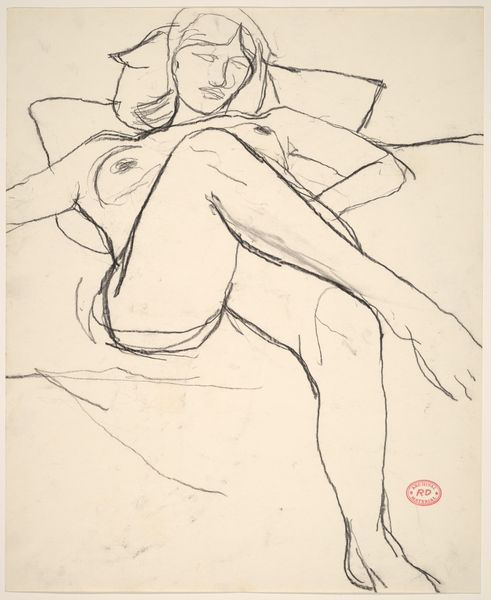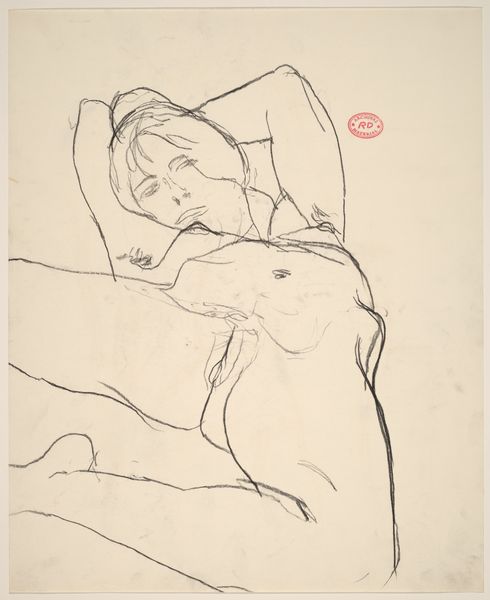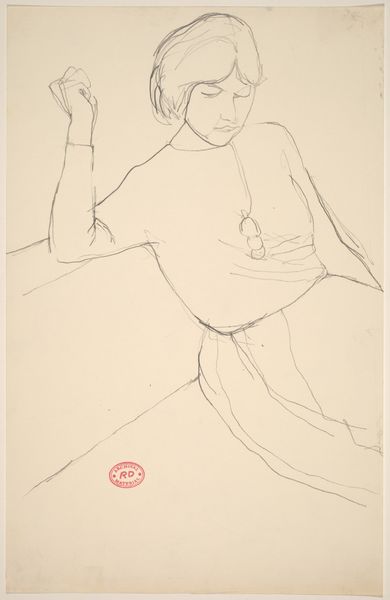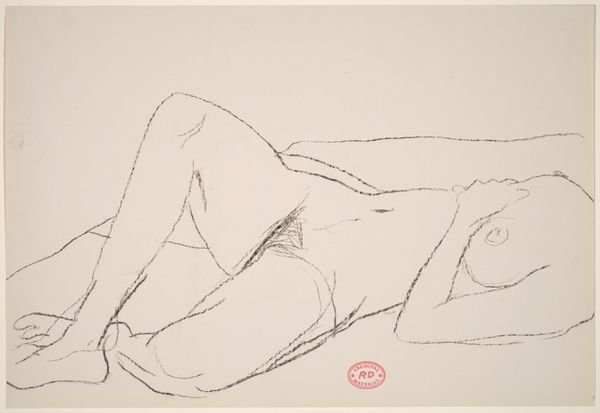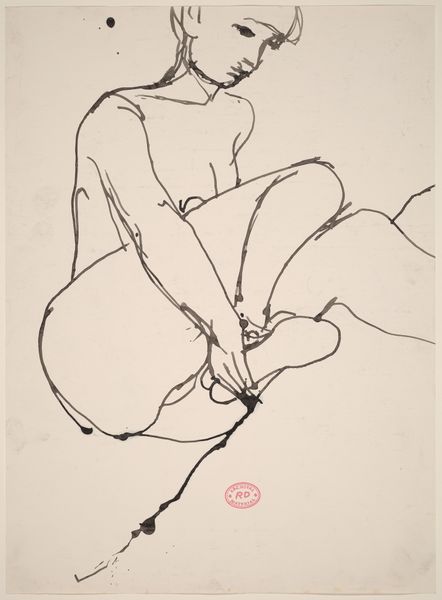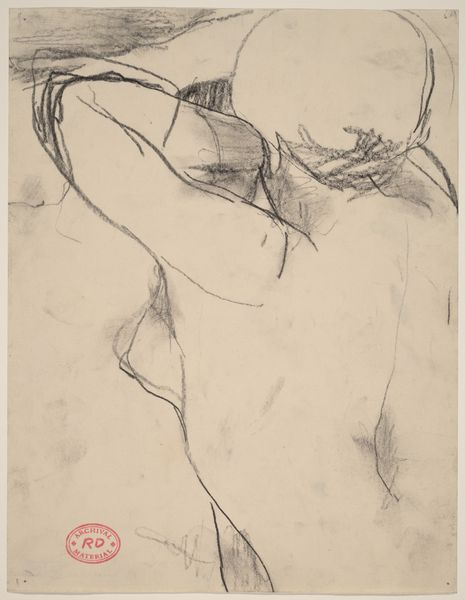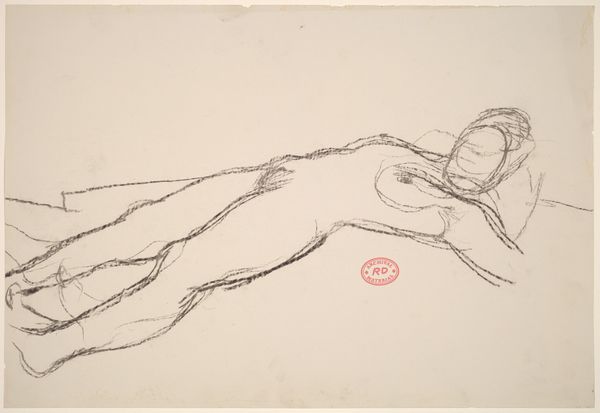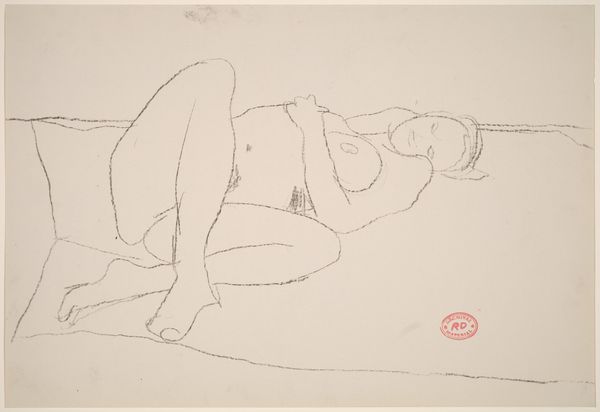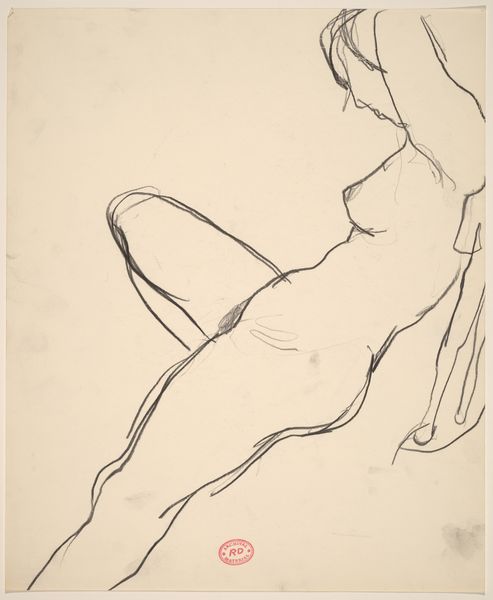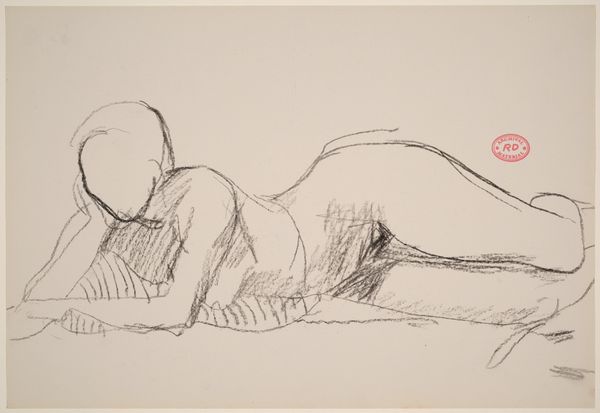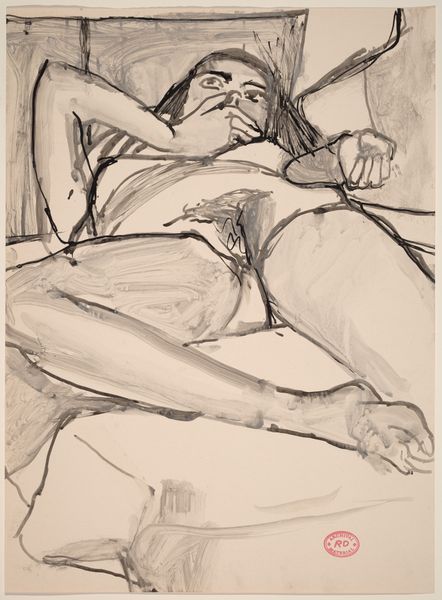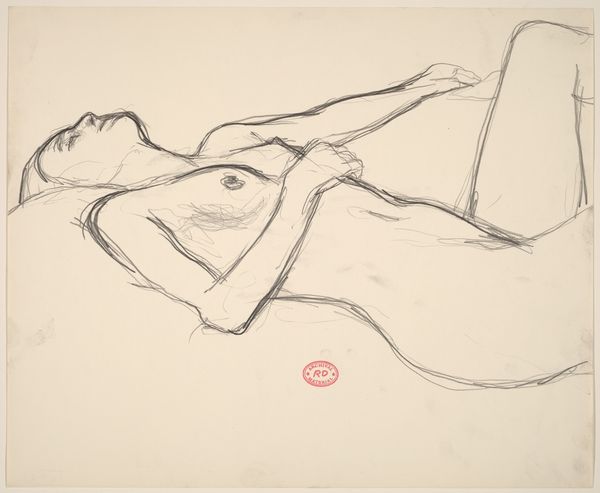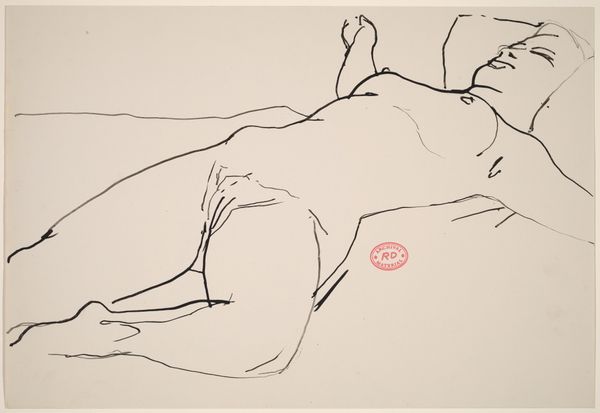![Untitled [female nude with belly on floor and left leg raised] by Richard Diebenkorn](/_next/image?url=https%3A%2F%2Fd2w8kbdekdi1gv.cloudfront.net%2FeyJidWNrZXQiOiAiYXJ0ZXJhLWltYWdlcy1idWNrZXQiLCAia2V5IjogImFydHdvcmtzLzc3NTljY2QzLWIxNTAtNGU4Yi1iYmNjLTg3MGNiMjBlOTliMi83NzU5Y2NkMy1iMTUwLTRlOGItYmJjYy04NzBjYjIwZTk5YjJfZnVsbC5qcGciLCAiZWRpdHMiOiB7InJlc2l6ZSI6IHsid2lkdGgiOiAxOTIwLCAiaGVpZ2h0IjogMTkyMCwgImZpdCI6ICJpbnNpZGUifX19&w=3840&q=75)
Untitled [female nude with belly on floor and left leg raised] 1955 - 1967
0:00
0:00
drawing, pencil
#
drawing
#
self-portrait
#
figuration
#
bay-area-figurative-movement
#
pencil drawing
#
pencil
#
line
#
nude
#
realism
Copyright: National Gallery of Art: CC0 1.0
Editor: This is an untitled pencil drawing by Richard Diebenkorn, created sometime between 1955 and 1967, showing a female nude reclining on the floor. There’s a simplicity to the linework, almost like a quick study, but there’s a really grounded quality in the pose. What strikes you about it? Curator: Well, immediately, I’m drawn to the tension between the apparent casualness of the subject matter and the artist's labor involved in creating this image with simple graphite on paper. Think about the materiality – the weight of the pencil, the texture of the paper, the pressure applied. Each of these is a record of Diebenkorn's process. The nude itself, as a subject, often associated with high art, here it’s grounded, isn't it? Almost industrial in its starkness. What do you make of that juxtaposition? Editor: I see what you mean! It's not idealized or romanticized at all. I was thinking about the social context… Did the accessibility of these materials, pencil and paper, impact who could participate in art making during this period? Curator: Absolutely. Diebenkorn’s use of accessible materials democratizes the artistic process. Pencil and paper, unlike bronze or oil paints, were affordable and readily available. So it makes one consider the production itself as a mode of empowerment for a broader range of artists, who otherwise may have lacked the resources. What could be said of the female body in that sense, how available *is* the body? Editor: That’s fascinating. Thinking about the materials really opens up a whole different understanding. So, it's not just about the image itself, but also about who had access to the means of creating that image, which impacts the very subject of the nude as well. Curator: Precisely. And the way Diebenkorn utilized these modest materials is very deliberate. This is less about replicating a form and more about the physical act of observing, recording, and transforming that observation through the touch of pencil to page. Hopefully we have reconsidered art through a critical materialist lens. Editor: Absolutely. I will never look at pencil drawings the same way! Thanks.
Comments
No comments
Be the first to comment and join the conversation on the ultimate creative platform.
